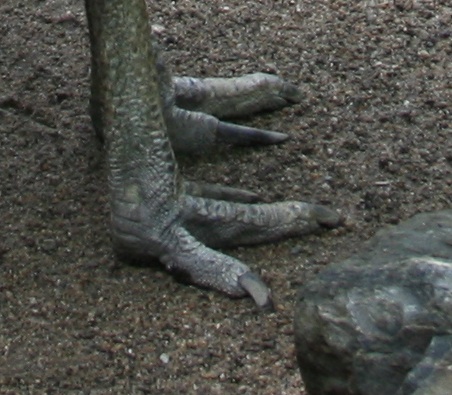
I love ratites. Always have.
I also love Australian fauna. Always have.
It was not long, then, before I did my first Australian ratite on this page. It's not that I do not like flying birds, but ratites - the classification of flightless birds containing ostriches, emus, cassowaries, kiwis and rheas - have always had a special place in my heart. Perhaps it's because they defy what we expect a bird to be.
The cassowary (specifically the double-wattled cassowary, the largest and most notorious species) takes the cake for my favorite ratite ever. I dressed up as one for Halloween one year, and a misspelled version (I forget why it was misspelled) was my first AOL user name. This is going to be one of those entries that comes from the heart.
So let's get to it, shall we?
Some of you probably immediately went, "wow, what a weird-looking bird!" It's approximately what you'd get if you crossed a hadrosaur and a turkey (with some LSD for good measure). That is not too far from the truth - ratites are some of the dinosaurs' closest living relatives...

...and holy crap, WOW, does it show in the cassowary! Not only does that crest (called a 'casque') look VERY much like a dinosaur's headgear, its toes were taken straight off of a Velociraptor. Those claws are not just for show; the cassowary is the most dangerous bird in existence for a reason.
Luckily, its forelimbs are all but useless; like all other ratites, its wings are so small that it cannot fly. Even if it did somehow grow sufficient wings, it lacks the keel that would allow for flight muscles.
Even its vestigial wings are unique. Six flight feathers from when these guys were airborne dinosaurs have been retained as long, hollow spines. Cassowaries also possess a vestigial finger on each wing. This phenomenon is rare among birds; another nearly-prehistoric species, the hoatzin, has clawed digits at birth, but loses them when mature. Trust me, that one will get its own entry eventually.
As described in the video, these intelligent birds are actually herbivores. They eat fruit, bugs, and other harmless things. There are several plants that benefit from the cassowary's eating habits (and, consequently, defecation habits) for seed dispersal and fertilization. It helps the seeds of one particular plant, Ryparosa, germinate. As with most rain forest creatures, habitat destruction has decreased its population significantly. Your mileage may vary regarding the cassowary population, but, lethal or no, they are part of Australia's natural ecology.
When even the giant chickens can kill you, you know you're in Australia. Or Indonesia. (Indonesia might need its own tag, soon.)



No comments:
Post a Comment